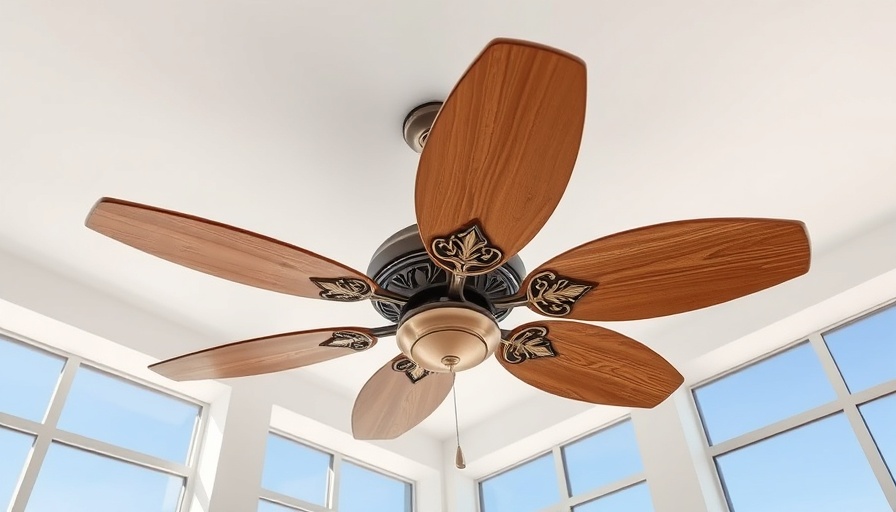
Why Dust Accumulates: The Hidden Dangers of Home Design
While many homeowners appreciate aesthetics in their living spaces, rarely do they consider how certain design choices may negatively impact their home’s cleanliness. Dust is not only unsightly; it can also pose health risks, triggering allergies and respiratory issues for many individuals. Understanding which features in the home can collect dust—and how to mitigate it—can significantly enhance air quality and create a healthier living environment.
The Common Culprits
The accumulation of dust in common household features is a prevalent issue. Items like ceiling fans, extensive carpeting, ornate light fixtures, and vent covers can become dust magnets, requiring comprehensive cleaning efforts. Studies indicate that dust in homes can contain pollutants, including allergens, making it imperative to be aware of these hidden traps.
Effective Solutions: Cleaning Habits to Adopt
Implementing effective cleaning practices is crucial in managing dust levels. For ceiling fans, a damp cloth should be used regularly to wipe the blades, or an extendable duster can be used for elevated fixtures. In homes with wall-to-wall carpeting, a high-quality vacuum cleaner with a HEPA filter is essential for trapping small particles. Shifting from heavy carpets to hard flooring options—like tile or hardwood—and incorporating washable rugs can also aid in reducing dust.
Design Choices Matter: Simplifying Your Space
Simple design choices can also greatly reduce dust accumulation. Opting for sleek, uncomplicated light fixtures instead of intricate designs not only makes cleanliness easier but also enhances light distribution. When it comes to curtains, going for lightweight materials that are washable will cut down on dust settle, as well as improve overall airflow within the home.
Regular Maintenance is Key
It is essential to establish a regular cleaning and maintenance routine. For baseboards and moldings, a quick wipe-down with a damp cloth or a dryer sheet will effectively reduce static and dust cling. Meanwhile, ensuring that air ducts are cleaned professionally every few years will dramatically minimize pollutants circulated throughout the home.
The Emotional Toll of Dirt: Why This Matters
Beyond physical health, a clean home ties closely to emotional well-being. The frustration of dust and allergens can diminish time spent in one’s personal space, affecting mood and comfort. Understanding and addressing the causes of dust accumulation not only improve respiratory health but can also lead to a more pleasant home life.
Looking to the Future: Trends in Clean Living
The trend towards clean living emphasizes not only aesthetic choices but also health-conscious designs. Homeowners are increasingly inclined to prioritize features that promote airflow and minimize dust. Innovations in home design and materials will likely be focused on sustainability and ease of cleaning, which can further enhance living conditions.
In conclusion, thoughtfully considering design choices is a crucial first step towards a cleaner, healthier home. By understanding the features that tend to accumulate dust and taking proactive measures to address them, homeowners can create a sanctuary that reflects both style and well-being. Start making these changes today for a healthier living environment!
 Add Row
Add Row  Add
Add 




Write A Comment